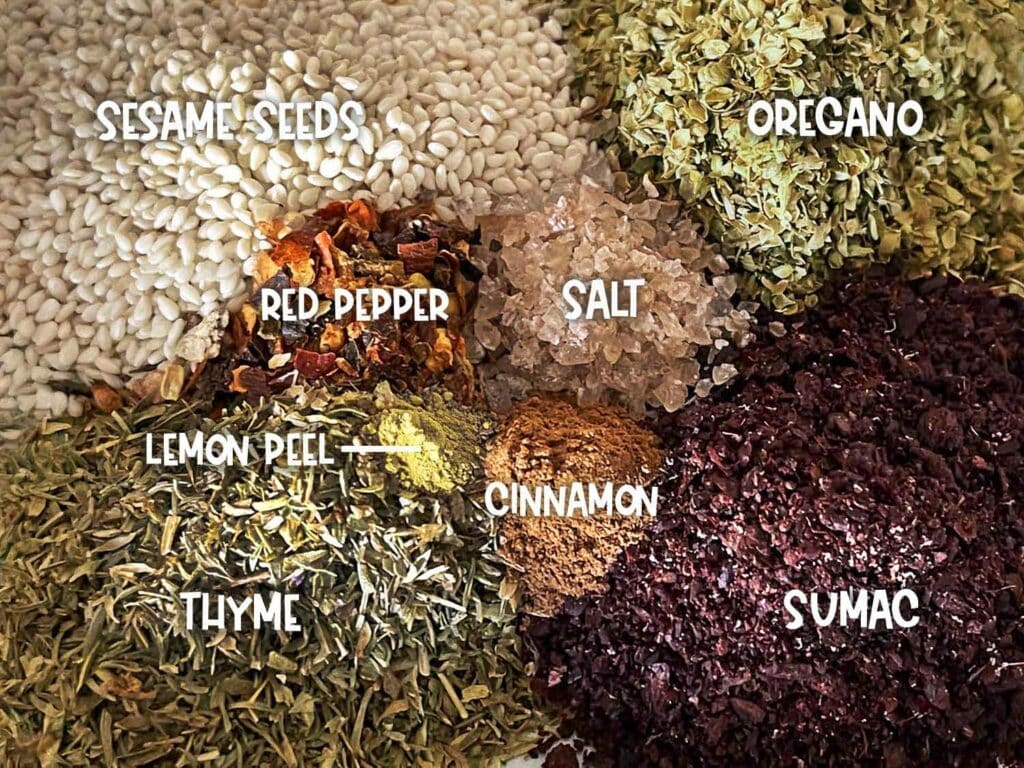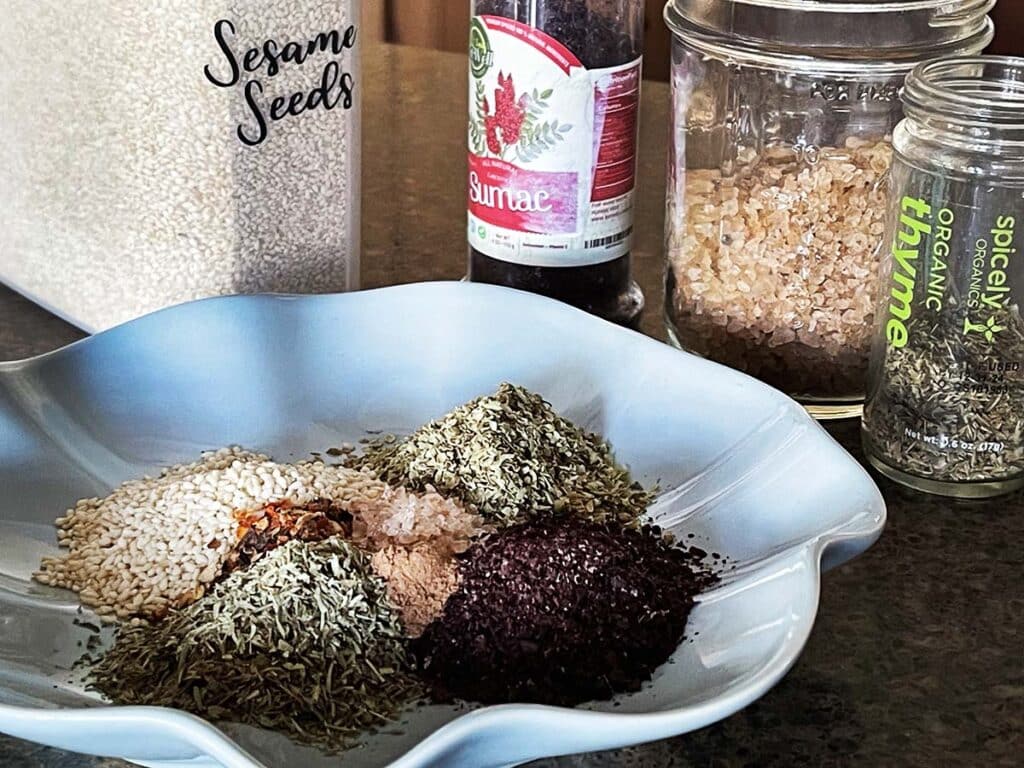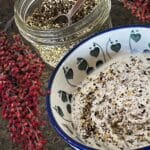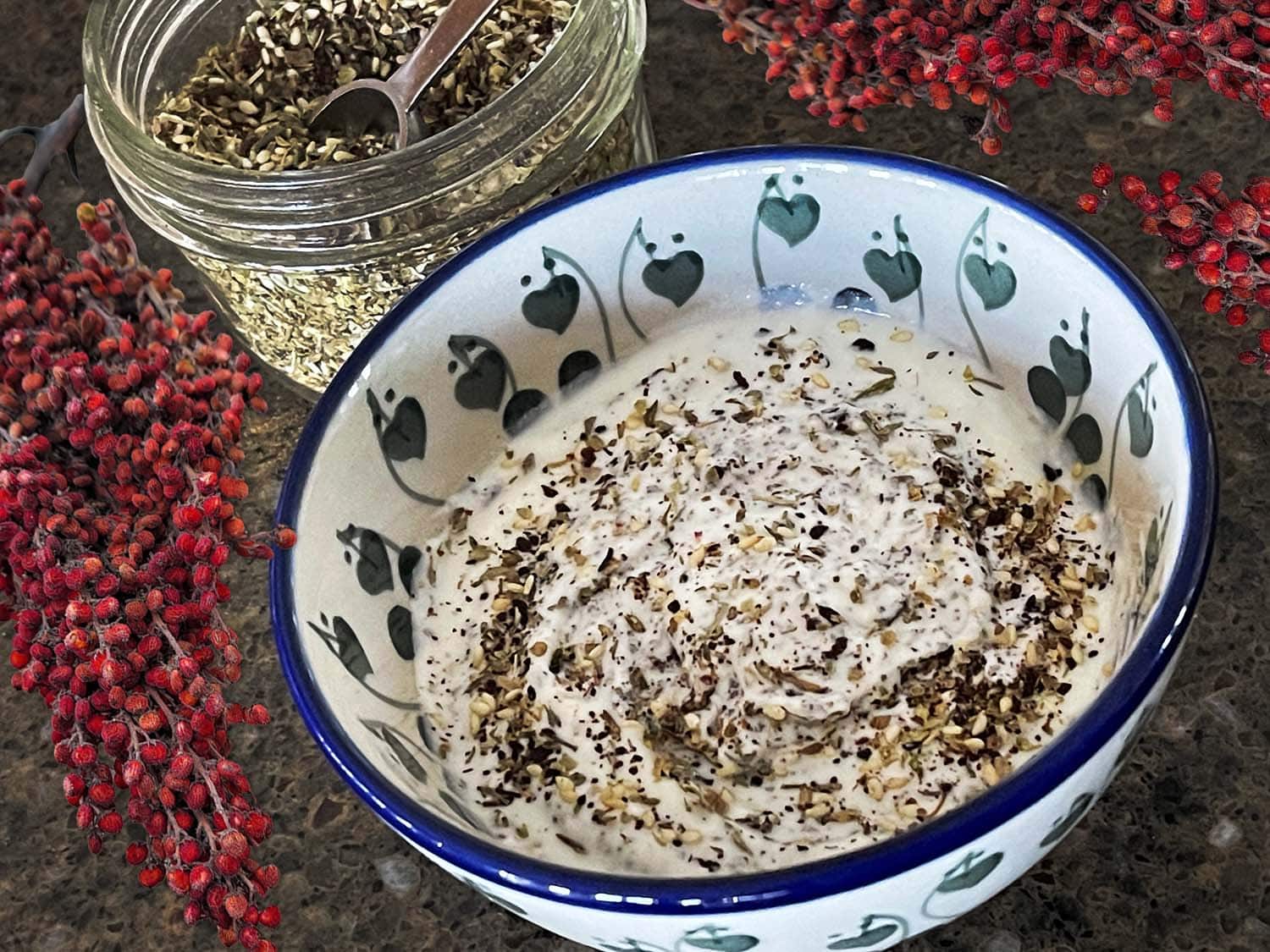Add a bit of Middle Eastern flare to your culinary creations with za’atar, a distinctive and complex spice blend that is both aromatic and savory, with yummy hints of tanginess and nuttiness.
Za’atar’s exact origins are a bit of a mystery lost to time, but historical references to a za’atar-like condiment date back to ancient Egypt, Israel, Syria, Lebanon, Jordan, Palestine and other areas of the Eastern Mediterranean. What we do know is that za’atar was prized by the peoples of this region for its earthy and tart flavor profile, as well as its reputed healing abilities. The ancient Greeks believed that za’atar made the mind alert and the body strong.
The word za’atar (pronounced zah-ah-tar) derives from the Arabic word for the wild thyme, which is a core ingredient in the za’atar blend.
Here’s where it gets a bit confusing.
Wild thyme is botanically not a true thyme. It’s actually part of the oregano family (Origanum syriacum) native to the Middle East region and is also commonly referred to as Syrian oregano. Both wild thyme and oregano belong to the Origanum genus, while garden/common thyme belongs to the Thymus genus.
Origanum syriacum is among the plants that has been proposed by scholars and botanists as a potential candidate for the Biblical hyssop or “ezov” referenced in the Old Testament as a symbol of purity.
While the recipe will vary depending on the region and family custom, the traditional spice mix usually consists of wild thyme, sumac, sesame seeds and salt.
Both the leaf and flowering wild thyme (Origanum syriacum) has been used traditionally as a tonic, diuretic and a natural expectorant, helping to clear respiratory congestion. Thyme (both wild and cultivated) contain the active compound thymol, a naturally occurring monoterpenoid phenol that gives thyme species their characteristic aroma and flavor, as well as antiseptic and antioxidant properties. Common cultivated oregano also contains some thymol, but in smaller quantities versus thyme and wild thyme.
Sumac's deep red berries have a tangy, almost lemon-like flavor. Rhus spp. is high in vitamin C, antioxidants and has anti-inflammatory properties It's been used historically as a treatment for everything from flatulence to fever. It's also known to lower blood sugar levels and improve heart health.
Sesame (Sesamum indicum) is a good source of fiber, protein, copper, vitamins and healthy fats. It has been used to improve heart health, control blood sugar, support male infertility and aid in digestion.
The flavor profile of wild thyme is somewhat similar to cultivated oregano, but with some distinct differences. Like oregano, wild thyme has an earthy, robust and slightly bitter flavor, but with more pronounced minty notes. It has a tangy, citrusy brightness not typical of common cultivated oregano as well as a warming spiciness reminiscent of cinnamon or clove.
You might say that the flavor of wild thyme sorta bridges the gap between cultivated oregano and common garden thyme. And since true wild thyme can be a bit difficult to source in our neck of the woods, using a blend of common dried oregano and thyme is a more accessible way to approximate its flavor of za‘atar. A pinch of cinnamon and a bit of lemon zest rounds out the flavor profile, helping to approximate the warm, spicy and citrusy notes that are characteristic of wild thyme.
ETA: If you’re interested in experiencing the real deal, Richters sells mature Origanum syriacum plant starts that grow perennially in zones 8-10!

Of course, part of the beauty of za’atar is in its versatility. Adjust the proportions to suit your taste. Some people prefer to add other spices like cumin or coriander.
You do you.
Experiment and find what works best for you and your taste buds ♥
And once you have your homemade za’atar blend dialed in, the options for using it are practically endless:
- combine with olive oil, lemon juice, garlic, honey and salt to create a vibrant and flavorful Middle Eastern-inspired salad dressing
- use as a dry rub for grilled meats or fish to infuse them with aromatic flavor and a Middle Eastern twist
- mix with olive oil in a shallow dish for a delicious dip for freshly baked bread
- sprinkle over eggs to add flavor and complexity to your breakfast or brunch dishes
- toss your favorite vegetables, such as cauliflower, carrots or potatoes, with ghee and za’atar before roasting
- combine with strained Greek yogurt (aka labneh) and a pinch of salt for a zesty condiment or veggie dip
- mix with hummus and spread on pita or crispbread style crackers
- add a dash to soups, pasta or rice dishes
- drizzle homemade focaccia bread with melted butter and sprinkle generously with za’atar before baking
- jazz up soaked nuts by tossing with a bit of olive oil, za’atar and salt before dehydrating for a Middle Eastern take on crispy nuts


Za’atar
5 Stars 4 Stars 3 Stars 2 Stars 1 Star
No reviews
Ingredients
3 T oregano, dried
2 T thyme, dried
2 T sumac, ground
2 T hulled white sesame seeds, toasted
1 tsp high-quality salt
1/2 tsp lemon zest, powdered
1/4 tsp ceylon cinnamon, ground
1/2 tsp red pepper flakes (optional)
Instructions
- Lightly toast the sesame seeds lightly in a dry pan over medium heat until golden brown and fragrant (or purchase toasted sesame seeds).
- Allow sesame seeds to cool completely before combining with the remaining ingredients.
- Secure the lid and give the jar a good shake to blend the ingredients.
Notes
Makes just over 1/2 cup of dry mix.
Store spice blend in a sealed jar or container in a cool, dry place.



